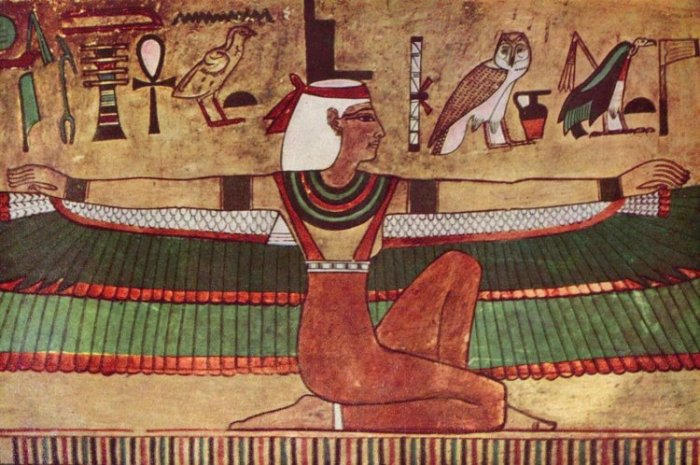Egyptian Gods’ Battle For Ancient Rome – Apis And Isis Cult Against Christianity
Ellen Lloyd - AncientPages.com - Spreading Christianity in ancient Rome and gaining new followers was not an easy task. Pagans and Emperors alike were opponents of the new faith. Christians were treated as intruders, enemies and traitors to the ancient Pagan gods.
Main rivals to Christianity were followers of the Apis and Isis cult. Apis and Isis, two ancient Egyptian gods who gained plenty of popularity among Romans. Both these cults tried to become the most dominant power of ancient Rome. However, at the end Christianity won this religious battle because Christians were best organized, united a had good allies.
Apis Cult In Ancient Rome
Apis, the sacred bull of the Egyptian capital Memphis was considered a manifestation of the god Ptah. Whenever an Apis bull died in Memphis it was embalmed, mummified and buried in a necropolis at Saqqara.
Each bull had its own huge sarcophagus, which was placed in one of these underground chambers. Ancient Egyptians recorded the animal's birth and death, and the dates were carved on a stone stelae set into the walls of the burial place. This was done in a way similar to our modern graveyards.
The bull-god was believed to be the manifestation or living image of Ptah. Credit: Land Of Pyramids
A prospective new Apis bull was required to have a white crescent on one side of its body or a white triangle on its forehead. This was a symbol representing its unique character and thus a sign the animal had been accepted by the gods. Once the Apis bull was chosen, its mother was also honored, and buried in catacombs at Saqqara set aside for the purpose. The bull was a symbol of strength and courage.
The Apis cult (3,000 B.C. - 400 A.D.) spread from Alexandria and became one of the most widespread Eastern cults in the Roman Empire. To ancient Romans, the bull was so sacred that the animal even had its own official bodyguard (a lictor) who protected it.
Isis Cult In Ancient Rome
The Isis cult (2,500 B.C. - 400 A.D.) in ancient Rome was the greatest rival to Christianity. Isis was one of the most important Egyptian goddess. Isis was an Egyptian goddess of magic, fertility and motherhood, and death, healing and rebirth. Married to the Egyptian god Osiris Isis was regarded as a perfect mother and wife. Isis was a divine symbol of motherhood and she was often depicted nursing her son Horus, just like Virgin Mary.
The Goddess Isis, wall painting, c. 1360 BCE. Credit: The Yorck Project Gesellschaft für Bildarchivierung GmbH
The cult of Isis involved initiation, baptism, and service and promised eventual salvation.
This also explains why Christianity had to struggle to overcome the Isis cult. One of the main reasons why Christians were victorious over the Isis followers was because the latter were very divided. Basically Isis followers lacked proper unity because the believers practiced their religion in different ways, depending on their locations. The Isis cult had no central organization in ancient Rome.
See also:
10 Types Of Ancient Crosses In Different Cultures Explained
5 Different Types Of Priests In Ancient Rome – Their Role And Responsibility Explained
Defixiones: Ancient Roman Curse Tablets Became Big Business
The message of Christianity was spread around the Roman Empire by St. Paul who founded Christian churches in Asia Minor and Greece. Eventually, he took his teachings to Rome itself.
 How The Strange Dream Of Roman Emperor Constantine Changed History
How The Strange Dream Of Roman Emperor Constantine Changed History
Life in ancient Rome was very difficult if you were a Christian. Christianity was banned and Christians were punished for many years.
Whoever, over time, the Christian church and faith grew more organized. In 313 AD, the Emperor Constantine issued the Edict of Milan, which accepted Christianity and persecution of Christians ended.
Written by Ellen Lloyd – AncientPages.com
Copyright © AncientPages.com & Ellen Lloyd All rights reserved. This material may not be published, broadcast, rewritten or redistributed in whole or part without the express written permission of AncientPages.com and Ellen Lloyd
About the author:
Ellen Lloyd – is the owner of AncientPages.com and an author who has spent decades researching ancient mysteries, myths, legends and sacred texts, but she is also very interested in astronomy, astrobiology and science in general
More From Ancient Pages
-
 On This Day In History: Army Of Tsar Alexander I Of Russia Enters Paris – On March 31, 1814
News | Mar 31, 2016
On This Day In History: Army Of Tsar Alexander I Of Russia Enters Paris – On March 31, 1814
News | Mar 31, 2016 -
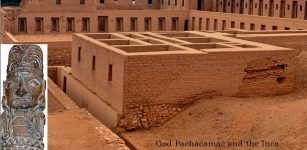 Pre-Columbian Pachacamac Site Dedicated To God Of Creation, Fire And Earthquakes In Inca Religion
Featured Stories | May 31, 2018
Pre-Columbian Pachacamac Site Dedicated To God Of Creation, Fire And Earthquakes In Inca Religion
Featured Stories | May 31, 2018 -
 Unique 8,400-Year-Old Burial Of A Dog Different From Modern Dogs Discovered In Sweden
Archaeology | Sep 25, 2020
Unique 8,400-Year-Old Burial Of A Dog Different From Modern Dogs Discovered In Sweden
Archaeology | Sep 25, 2020 -
 Mysterious Ancient Stone Structure Discovered In Torreano, Italy
Archaeology | Mar 29, 2023
Mysterious Ancient Stone Structure Discovered In Torreano, Italy
Archaeology | Mar 29, 2023 -
 What Was Asphalt Doing On A 9,000-Year-Old Skull Discovered In The Judean Desert
Archaeology | Feb 1, 2022
What Was Asphalt Doing On A 9,000-Year-Old Skull Discovered In The Judean Desert
Archaeology | Feb 1, 2022 -
 Earliest Ochre Crayon Used By Our Ancestors 10,000 Years Ago Found In Yorkshire, Northern England
Archaeology | Jan 29, 2018
Earliest Ochre Crayon Used By Our Ancestors 10,000 Years Ago Found In Yorkshire, Northern England
Archaeology | Jan 29, 2018 -
 Atlit Yam – Fate Of The 9,000-Year-Old Underwater Megalithic Site With A Huge Stone Circle
Featured Stories | Jun 14, 2021
Atlit Yam – Fate Of The 9,000-Year-Old Underwater Megalithic Site With A Huge Stone Circle
Featured Stories | Jun 14, 2021 -
 Why Was The Moretta Mask So Popular?
Ancient History Facts | Feb 14, 2020
Why Was The Moretta Mask So Popular?
Ancient History Facts | Feb 14, 2020 -
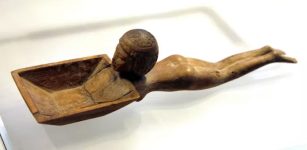 Intriguing And Suprising Ancient History Of Swimming That Started Over 100,000 Years Ago
Featured Stories | Dec 28, 2022
Intriguing And Suprising Ancient History Of Swimming That Started Over 100,000 Years Ago
Featured Stories | Dec 28, 2022 -
 Abduction Of Idun, Goddess-Keeper Of Golden Juvenile Apples In Norse Mythology
Featured Stories | Nov 16, 2019
Abduction Of Idun, Goddess-Keeper Of Golden Juvenile Apples In Norse Mythology
Featured Stories | Nov 16, 2019 -
 Diver Says He Found Mysterious Underwater Ancient Tomb, Ruins And Artifacts Of An Unknown Advanced Civilization
Featured Stories | Oct 10, 2023
Diver Says He Found Mysterious Underwater Ancient Tomb, Ruins And Artifacts Of An Unknown Advanced Civilization
Featured Stories | Oct 10, 2023 -
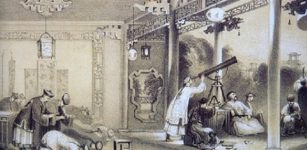 On This Day In History: Sunspot Observed By Chinese Astronomers During The Han Dynasty – On May 10, 28 BC
News | May 10, 2016
On This Day In History: Sunspot Observed By Chinese Astronomers During The Han Dynasty – On May 10, 28 BC
News | May 10, 2016 -
 Mysterious 9,000-Year-Old Shaman Burial In Bad Dürrenberg – One Of Central Europe’s Most Spectacular Archaeological Discoveries
Featured Stories | Sep 15, 2023
Mysterious 9,000-Year-Old Shaman Burial In Bad Dürrenberg – One Of Central Europe’s Most Spectacular Archaeological Discoveries
Featured Stories | Sep 15, 2023 -
 Five Witchcraft Myths Debunked By An Expert
Featured Stories | Oct 27, 2023
Five Witchcraft Myths Debunked By An Expert
Featured Stories | Oct 27, 2023 -
 100,000-Year-Old Case Of Deafness Discovered In Fossilized Skull Of Hunter-Gatherer
Archaeology | Jul 21, 2022
100,000-Year-Old Case Of Deafness Discovered In Fossilized Skull Of Hunter-Gatherer
Archaeology | Jul 21, 2022 -
 How Did Sargon Become The Most Powerful Ruler Of Mesopotamia?
Featured Stories | Apr 3, 2020
How Did Sargon Become The Most Powerful Ruler Of Mesopotamia?
Featured Stories | Apr 3, 2020 -
 Migration Of Early Humans Out Of Africa Began Thousands Of Years Earlier Than Previously Thought
Archaeology | Dec 18, 2017
Migration Of Early Humans Out Of Africa Began Thousands Of Years Earlier Than Previously Thought
Archaeology | Dec 18, 2017 -
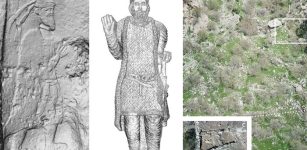 Mysterious 2,000-Year-Old Lost City Of Natounia May Have Been Found!
Archaeology | Jul 20, 2022
Mysterious 2,000-Year-Old Lost City Of Natounia May Have Been Found!
Archaeology | Jul 20, 2022 -
 Why Was The Urnes Brooch So Popular At The End Of The Viking Age?
Archaeology | May 27, 2023
Why Was The Urnes Brooch So Popular At The End Of The Viking Age?
Archaeology | May 27, 2023 -
 Sir William Wallace: Brave Scottish Knight And Legendary Hero
Featured Stories | Feb 27, 2016
Sir William Wallace: Brave Scottish Knight And Legendary Hero
Featured Stories | Feb 27, 2016



